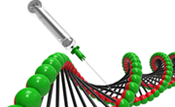
Locke Lord QuickStudy: Medical Diagnostic Patents Found to Claim Patent Ineligible Subject Matter—Motions to Dismiss Granted

On August 4, 2017, a pair of decisions reaffirmed that claimed methods which apply routine and conventional techniques to a law of nature are invalid and do not satisfy the “inventive concept” step of the patent eligibility test when the claims are directed to the observation of a natural occurrence under 35 U.S.C. § 101. See Athena Diagnostics, Inc. et al. v. Mayo Collaborative Srvs, LLC, d/b/a Mayo Medical Labs. et al., C.A. No. 15-40075-IT, 2017 WL 3336275 (D. Ma. Aug. 4, 2017); The Cleveland Clinic Foundation et al. v. True Health Diagnostics, LLC, C.A. No. 17-198-LMB-IDD, 2017 WL 3381976 (E.D. Va. Aug. 4, 2017).
In Athena, the patent-in-suit is directed to a method of diagnosing neurotransmission or developmental disorders relating to muscle specific tyrosine kinase (“MuSK”) using a non-naturally occurring protein to provide a radioactive label on specific antibodies present in bodily fluid. See Athena, 2017 WL 3336275 at *1-*4. The court applied the two-step patent eligibility test (see Alice Corp. Pty. Ltd. v. CLS Bank Intern., 134 S. Ct. 2347, __ (2014)) and found that the claimed method is directed to a natural occurrence—that “[t]he purpose of the patent is to detect whether any anti-body antigen complexes are formed between the 125I-MuSK receptor and the antibodies ‘present in said bodily fluid.’” Id. at *3. The court found that, like in Mayo Collaborative Servs. v. Prometheus Labs., Inc., 566 U.S. 66 (2012), plaintiffs’ man-made product (125I-MuSK) is simply applied to a sample and the by-product is observed and such use of a man-made product does not transform the method into patent eligible subject matter. See id. at *4. Turning to the second step of the patent eligibility test, despite the patent specification stating that the “[i]odination and immunoprecipitation are standard techniques in the art,” plaintiffs argued that none of the steps are routine when applied to proteins, given the complexity. Id. at *5. The court discounted plaintiffs’ argument noting that, in general, patents are to include an appropriate written description to enable a person skilled in the art to make and use the claimed invention; however, “[n]one of the complexity to which Plaintiffs cite is described or claimed in the patent” and “complexity alone does not make their method patentable.” Id. Accordingly, the Athena court found that the claimed method does not recite any inventive concept and granted defendants’ motion to dismiss.
In Cleveland Clinic, the patents-in-suit are directed to identifying the levels of an enzyme (myeloperoxidase (“MPO”)) in the blood of a person who suffers from atherosclerotic cardiovascular disease (“CVD”). See Cleveland Clinic, 2017 WL 3381976 at *1-*4. The court noted that, given the Federal Circuit’s ruling concerning related patents, “there can be no dispute that the correlation between MPO and CVD is a natural law.” Id. at *7. Plaintiffs argued that because the claims are directed to laboratory techniques rather than a diagnostic method, the claims are not directed to patent ineligible subject matter. Id. The court disagreed, noting that “[a]lthough laboratory methods may be more likely to survive a § 101 inquiry . . . their survival is not automatic.” Id. at *8 (internal citation omitted). Rather, the court found that the claims are directed to a method of detecting elevated MPO in a sample from a patient with atherosclerotic CVD such that the “method is therefore only useful for detecting the elevated MPO linked to CVD—that is, for detecting the natural phenomenon. It is not a general laboratory technique for detecting MPO levels.” Id. Therefore, the court held that the claimed method is directed to natural law, and that a contrary finding would otherwise “permit artful drafters to recast any diagnostic patent as a laboratory method patent, frustrating the purpose of the natural law exception.” Id. The court then determined that the claims-at-issue do not recite an “inventive concept,” but rather simply recited routine, conventional steps used by others in the field. See id. at *8-*9. Even viewing the steps in an ordered combination, despite not having been used for this particular purpose in the past, the court still found that no inventive concept exists because the claims are simply directed to “pure observation or identification of the natural law at issue”—i.e., that CVD generates higher MPO levels. See id. at *9-*10. Thus, the court held that the patents-at-issue do not pass the two-step patent eligibility test and granted defendant’s motion.
Athena and Cleveland Clinic demonstrate the importance of careful consideration of method claims to determine if they meet the standards of patent eligibility. For medical diagnostics patents, claims that merely recite how a body processes a material (or measures a resulting product from such processing) are susceptible to Section 101 patent invalidity challenges. Whether prosecuting a patent application or defending against a patent infringement suit, one must also scrutinize the claimed steps of the method to determine whether or not the steps constitute routine, well-known and conventional steps used by those in the field of the invention. Indeed, even if the combination of claimed steps is novel, such combination does not automatically transform the patent ineligible subject matter into patent eligible subject matter, particularly when the crux of the claimed method is the observation of a law of nature or the result of a law of nature.
Don't miss a beat.
Sign up for our newsletter and get the latest to your inbox.

